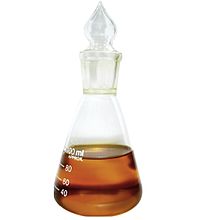
Exploring the bioprospecting and biotechnological potential of white-rot and anaerobic Neocallimastigomycota fungi: peptidases, esterases, and lignocellulolytic enzymes
Sign Up to like & getrecommendations! Published in 2017 at "Applied Microbiology and Biotechnology"
DOI: 10.1007/s00253-017-8225-5
Abstract: Fungi constitute an invaluable natural resource for scientific research, owing to their diversity; they offer a promising alternative for bioprospecting, thus contributing to biotechnological advances. For a long time, extensive information has been exploited and… read more here.
Keywords: rot anaerobic; anaerobic neocallimastigomycota; lignocellulolytic enzymes; white rot ... See more keywords

An overview of Trichoderma reesei co-cultures for the production of lignocellulolytic enzymes.
Sign Up to like & getrecommendations! Published in 2021 at "Applied microbiology and biotechnology"
DOI: 10.1007/s00253-021-11261-7
Abstract: Biorefineries are core facilities for implementing a sustainable circular bioeconomy. These facilities rely on microbial enzymes to hydrolyze lignocellulosic substrates into fermentable sugars. Fungal co-cultures mimic the process of natural biodegradation and have been shown… read more here.
Keywords: production; enzyme activities; trichoderma reesei; lignocellulolytic enzymes ... See more keywords

Biotransformation of agro-industrial waste to produce lignocellulolytic enzymes and bioethanol with a zero waste
Sign Up to like & getrecommendations! Published in 2020 at "Biomass Conversion and Biorefinery"
DOI: 10.1007/s13399-020-00738-6
Abstract: The use of lignocellulosic wastes reduces dependence on fossil fuel resources, contributes to sustainable waste management, and reinforces the circular economy model of continual use of resources. Typically, the second generation of bioethanol production involves… read more here.
Keywords: biotransformation agro; waste; lignocellulolytic enzymes; agro industrial ... See more keywords

Brewer’s spent grain biotransformation to produce lignocellulolytic enzymes and polyhydroxyalkanoates in a two-stage valorization scheme
Sign Up to like & getrecommendations! Published in 2020 at "Biomass Conversion and Biorefinery"
DOI: 10.1007/s13399-020-00918-4
Abstract: Lignocellulolytic enzymes from low-cost sources are gaining attention as a tool to reduce production costs. Such enzymes can be obtained sustainably by diverse fungal strains via solid-state fermentation (SSF) of lignocellulosic-derived residues as substrates. Besides,… read more here.
Keywords: two stage; stage valorization; bsg; lignocellulolytic enzymes ... See more keywords

Hydroxycinnamic acids release during bioconversion of corn stover and their effects on lignocellulolytic enzymes.
Sign Up to like & getrecommendations! Published in 2019 at "Bioresource technology"
DOI: 10.1016/j.biortech.2019.122116
Abstract: Hydroxycinnamic acids released during alkaline pretreatment of lignocellulose, especially p-coumaric acid (p-CA) and ferulic acid (FA), negatively affect the enzymatic hydrolysis and fermentation. However, the mechanism of this effect is not well understood. In this… read more here.
Keywords: corn stover; hydroxycinnamic acids; lignocellulolytic enzymes; release ... See more keywords

Fungal lignocellulolytic enzymes and lignocellulose: A critical review on their contribution to multiproduct biorefinery and global biofuel research.
Sign Up to like & getrecommendations! Published in 2021 at "International journal of biological macromolecules"
DOI: 10.1016/j.ijbiomac.2021.11.063
Abstract: The continuous increase in the global energy demand has diminished fossil fuel reserves and elevated the risk of environmental deterioration and human health. Biorefinery processes involved in producing bio-based energy-enriched chemicals have paved way to… read more here.
Keywords: biofuel; research; contribution; biorefinery ... See more keywords

In Situ Corn Fiber Conversion for Ethanol Improvement by the Addition of a Novel Lignocellulolytic Enzyme Cocktail
Sign Up to like & getrecommendations! Published in 2022 at "Journal of Fungi"
DOI: 10.3390/jof8030221
Abstract: Corn mashes have high-viscosity and high-sugar characteristics, which hinders yeast-fermentation efficiency and the ethanol yield increase. The excessive viscosity of corn mash is caused by the unutilized cellulose in corn kernel fiber. A novel lignocellulolytic… read more here.
Keywords: novel lignocellulolytic; conversion; ethanol yield; corn ... See more keywords